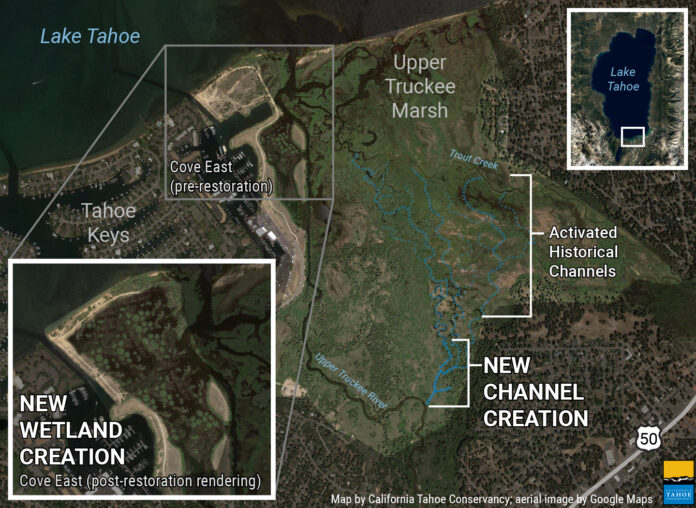Three years of construction and $11.5 million later, the residents of and visitors to the South Lake Tahoe area enjoy a newly-restored marsh that had been lost over the years following development and alterations to the river that flowed through it (Figure 1).
In the 1940s the Upper Truckee Marsh in South Lake Tahoe covered 1,600 acres, which made it the largest wetland in the Sierra Nevada. Water from the Upper Truckee River’s multiple channels and lagoons flowed into the marsh to Lake Tahoe.
The marsh began to change when ranchers manipulated the Upper Truckee River in order to dry out the marsh and increase forage for cattle grazing. In the 1960s, a large housing development bifurcated the marsh — reducing its size to 500 acres (202 ha).
In the late 1980s, further planned development of housing and a golf course on a portion of the remaining marsh was stopped by a lawsuit. The California Tahoe Conservancy, a state agency, purchased the property in 1988, with a plan to restore channels in the marsh and re-wet approximately 200 acres (81 ha) that dried out when the river was straightened. In the early 2000s, conservationists removed 8,000 truckloads of dirt that had been dumped into the marsh.
Designing the restoration project, which included filling a portion of the Tahoe Keys Marina that was called the sailing lagoon and restoring the area around it to create 12 acres (4.85 ha) of new wetland, required attention to the sequencing and scheduling of the work around the short construction season in the Sierra Nevada and the complex interactions of Lake Tahoe levels, the river and weather.
A public walking trail through the new wetlands to Lake Tahoe crossed the site and remained open for all but a few weeks during construction while it was upgraded (Figure 2). “It was interesting to have the public in the construction area, but we continually moved fencing and signage throughout the project to ensure safety of the walkers and the construction workers,” said Ed Wallace, PE, water resources engineer at Northwest Hydraulic Consultants.
“We spent a lot of time with the public, explaining what was happening and answering questions,” said Scott Carroll, senior environmental planner for the California Tahoe Conservancy, the project manager for the Upper Truckee Marsh Restoration. At first there was some mistrust and concern that the walking trail would be inaccessible, but the constant interaction allayed their fears, he added. “By the second year, they could see plants and progress on construction, and many stopped to watch construction from the trail.”
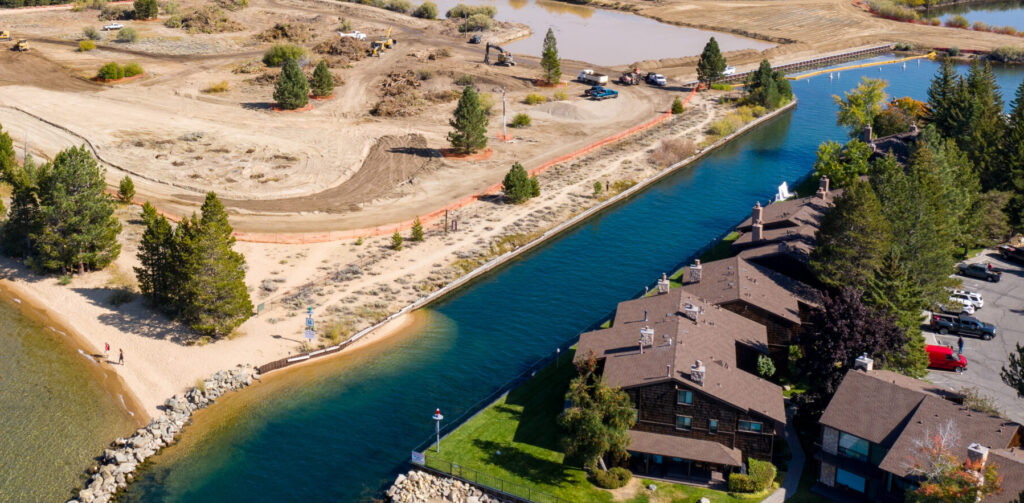
Creating the new wetland required isolating the sailing lagoon from the Tahoe Keys Marina by constructing a sheetpile barrier between the two waterbodies. Fill placed for a future residential development was also removed and buried in the former sailing lagoon which also served to cover noxious plant species that had become well established in the lagoon. These noxious weeds were buried under two feet of material, then covered with a granular and sandy soil produced from grading. The new 12-acre (5-hectare) wetland area was shaped and contoured to elevations that would support a variety of wetland vegetation. Six species of sedges and rushes, willows, Woods’ rose and three species of currants were planted for erosion control and wildlife habitat (Figure 3, 4).
In addition to restoring a portion of the marina and surrounding fill to a wetland system, a key component of the project was the construction of channels to connect the river to the marsh and re-establish flows through historic channels, said Carroll.
Designing the channels in this project was difficult, said Wallace. “We laid out the channels to take advantage of existing channels and vegetation,” he said. “We placed the steep banks of the channel at the base of the vegetation, especially the large willows, which helped stabilize the bank and improved the habitat for wildlife.” Throughout the reconstruction of the channels, vegetation that was removed, pruned, and salvaged was stored onsite and used to stabilize channel banks (Figure 5).
Because the project spanned several years, it was important to stabilize all work and take steps to minimize erosion due to melting snow, rain and flooding river. The channels did activate a couple of times during storm events and during snowmelt but there were not significant amounts of flow. “For additional insurance and management, sluice boards (Figure 6), which can be operated manually, were designed and installed in the pilot channels to allow regulation of flows from the river and the channels, and allow the vegetation to become established before been connected to the Upper Truckee River,” said Julie Etra, MS, CPESC, Western Botanical Services Inc. “The channels were revegetated with a variety of biotechnical methods to stabilize the banks and provide habitat.” These methods included willow poles, fascines, clump salvage and replacement, wetland sod salvage and placement, container plantings (Woods’ rose) and branch packing to ensure well-stabilized slopes.
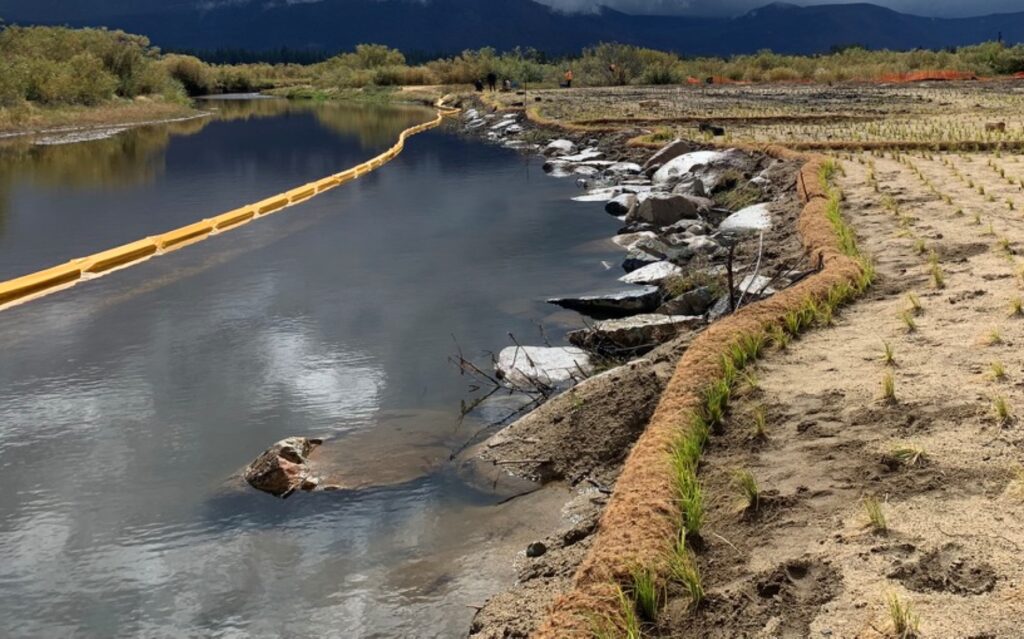
Species of plants were determined by hydrology and laid out by elevation and depth to groundwater, as well as availability. “In the 12-acre (5-hectare) new wetlands area, over 70,000 wetland plugs were planted because the area could not be left to natural recruitment, and most of these species typically don’t establish from seed,” said Etra.
Species that are dominant in the adjacent, undisturbed marsh and are commonly available and easy to propagate were selected for the new wetlands. The dominant species were a sedge and a rush, Carex nebrascensis (Nebraska sedge) and Juncus arcticus (Baltic rush). Others included C. utriculate (beaked sedge) C. pellita (wooly sedge), C. praegraclis (slender sedge), and J. ensifolius (equitant rush). Additional container plants were used to provide wildlife habitat, screening and pedestrian traffic control. Two seed mixes were also used to maximize diversity and erosion control, one for the uplands and transitional areas and the other for the wetlands. Seed quality was emphasized, with zero tolerance for weed species.
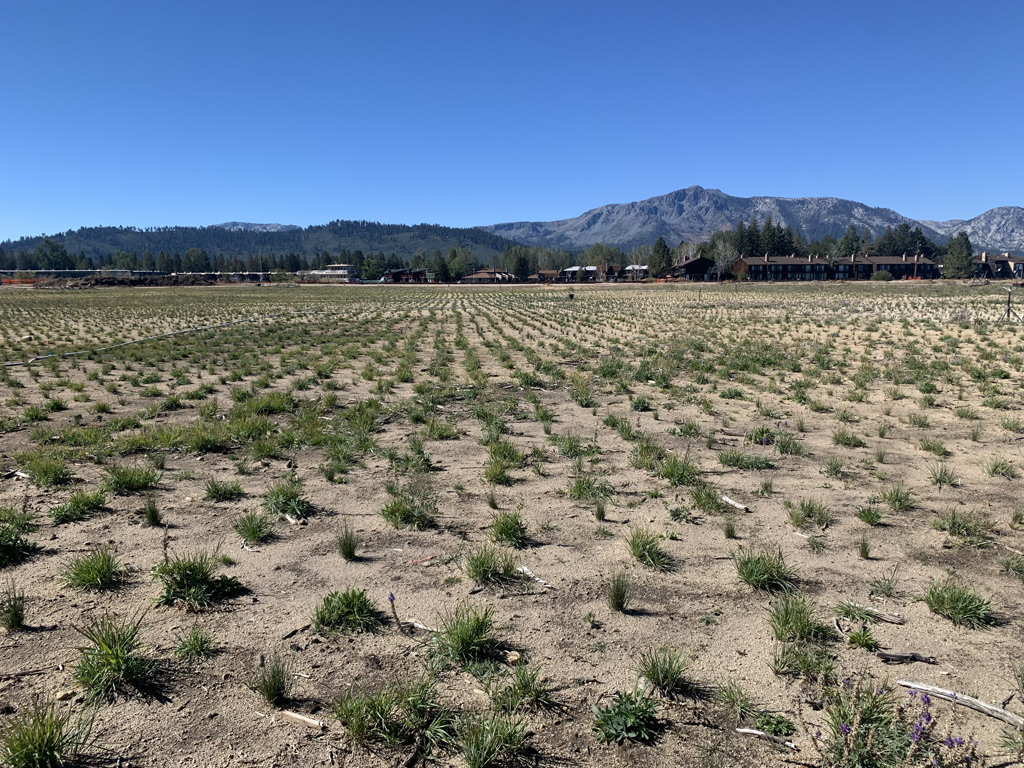
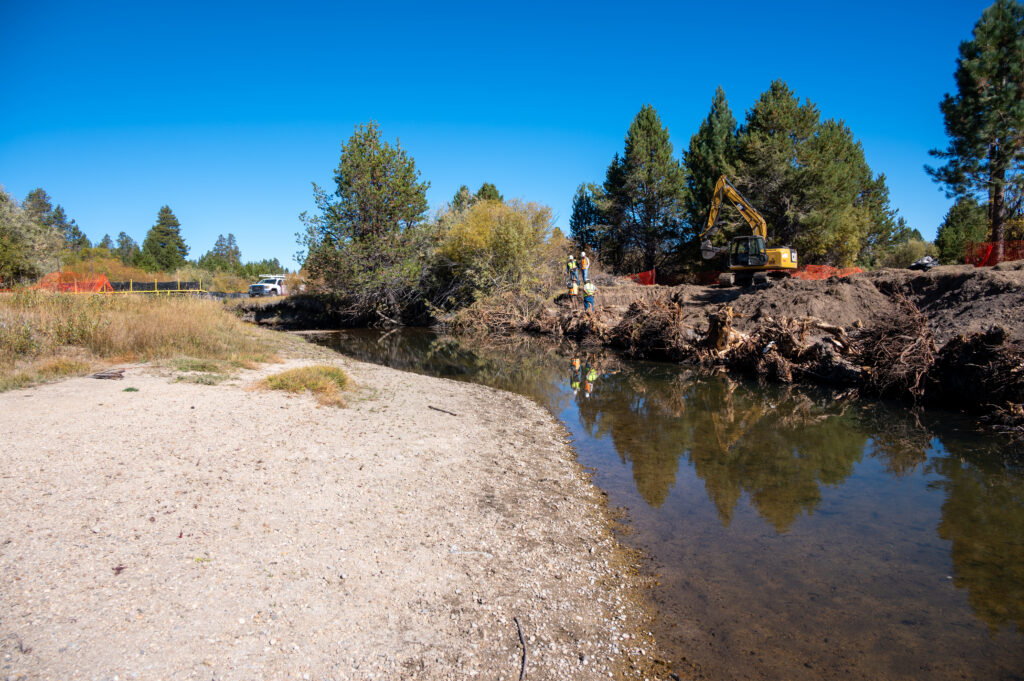
Lake Tahoe Benefits From Restoration
Lake Tahoe’s average annual clarity in 2021 was 61 feet (18.5 m) compared to 63 feet (19m) in 2020, and the states of California and Nevada, which share a border at Lake Tahoe, are actively working to restore lake clarity to its historic 97.4 feet (29.7 m).1
The Upper Truckee Marsh is an important part of the Lake Tahoe ecosystem, said Carroll. “Previous residential and golf course construction activities in and around the Upper Truckee Marsh area were identified as major sources of sediment but the restoration of the marsh will filter more sediment, raise the groundwater table and improve the habitat for wildlife, fish and plants.”
All construction projects come with surprises, and this project was no exception. A pre-construction wildlife survey identified the presence of the Willow Fly Catcher, so construction was not planned in those areas during the nesting season. Beavers also added another layer of complexity in the design engineering phase.
“We conducted our site investigation a couple of years before construction to determine water levels and used that data to create the design,” said Brent Wolfe, PE, water resources engineer with Northwest Hydraulic Consultants. “Then, we discovered a significant increase in water elevation because some beavers had been very active in the time between our surveys and the start of construction. Luckily, it only affected one of the pilot channels, so what we planned as a secondary pilot channel became our primary channel.”
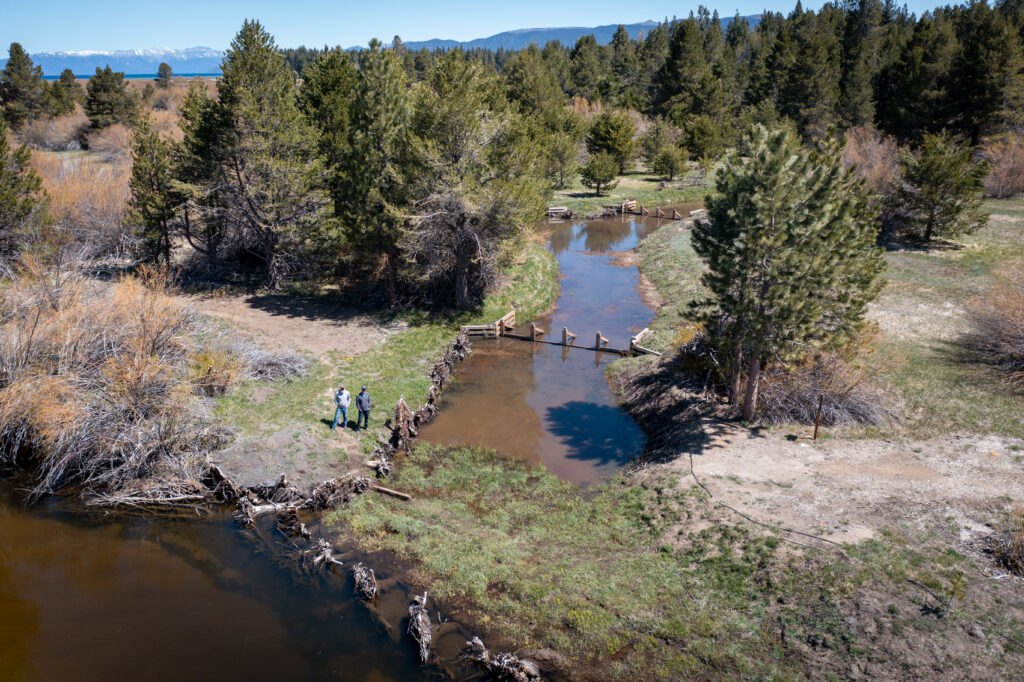
Reference:
Kerlin K. Lake Tahoe Clarity Report for 2021. July 06, 2022. www.ucdavis.edu/climate/news/lake-tahoe-clarity-report-2021
Funding for the Upper Truckee Marsh Restoration
The California Tahoe Conservancy provided funds from Propositions 12, 40, 50, 68, and 84, and from the Habitat Conservation Fund, with additional funding from the California Wildlife Conservation Board, the California Department of Fish and Wildlife, the USDA Forest Service, the U.S. Army Corps of Engineers, and the Bureau of Reclamation.



